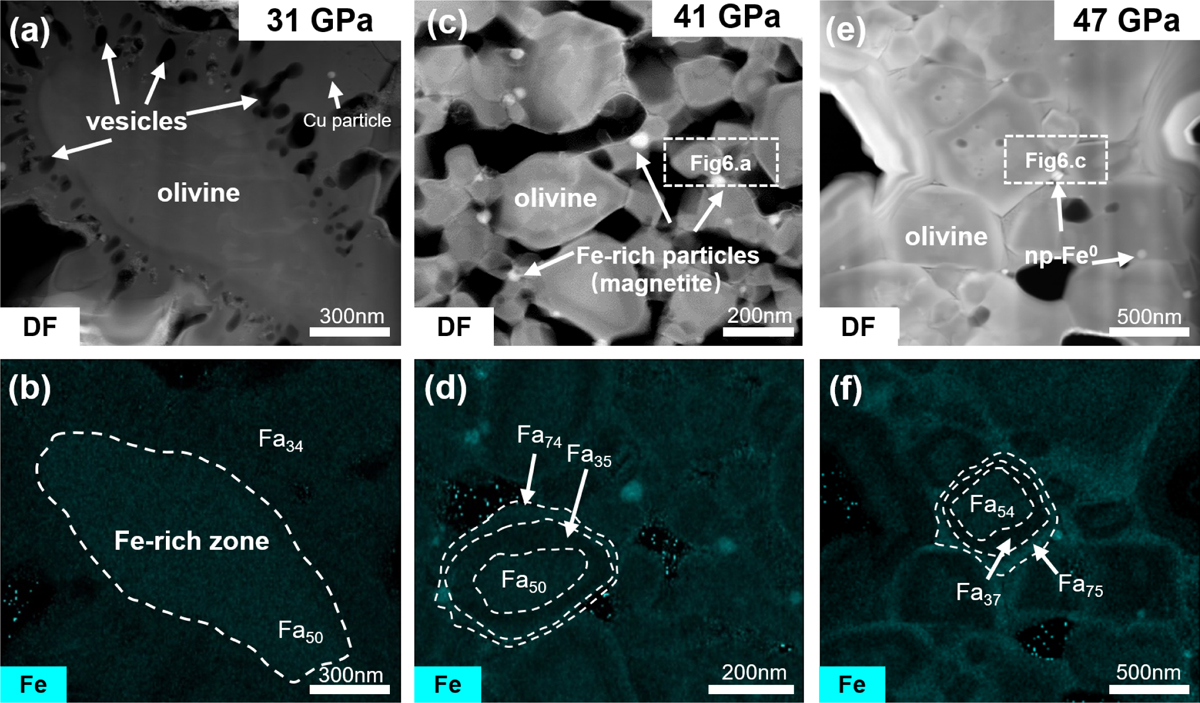Fig. 4

Download original image
Iron migration in minerals observed via TEM. (a and b) Dark-field (DF) TEM image and corresponding iron elemental mapping of olivine shocked at 31 GPa. A ring of vesicles is observed along the grain edges (a). The interior of the olivine is Fe-rich, with an average Fa# of 50, whereas the edges are relatively Fe-poor, with an average Fa# of 34 (b). (c and d) DF TEM image and iron elemental mapping of olivine shocked at 41 GPa. Nanoscale Fe-rich particles are concentrated at grain corners. The Fe distribution within the olivine exhibits a three-layer zoning pattern. The core maintains its original Fe composition with an average Fa# of 50. The intermediate layer shows a substantial decrease in Fe content, with an average Fa# of 35. In contrast, the outermost rim has the highest Fe enrichment, reaching an average Fa# of 74. (e and f) DF TEM image and Fe elemental mapping of olivine shocked at 47 GPa. Nanoscale metallic iron particles are dispersed at grain corners, edges, and within the interior. The iron distribution follows a similar zonal pattern as those observed in (d). The core maintains its initial Fa# of 54, with the middle layer relatively Fe-poor (average Fa# of 37) and the outermost rim Fe-enriched (average Fa# values 75). These variations in Fe contents indicate substantial Fe migration within the olivine due to the shock events.
Current usage metrics show cumulative count of Article Views (full-text article views including HTML views, PDF and ePub downloads, according to the available data) and Abstracts Views on Vision4Press platform.
Data correspond to usage on the plateform after 2015. The current usage metrics is available 48-96 hours after online publication and is updated daily on week days.
Initial download of the metrics may take a while.


